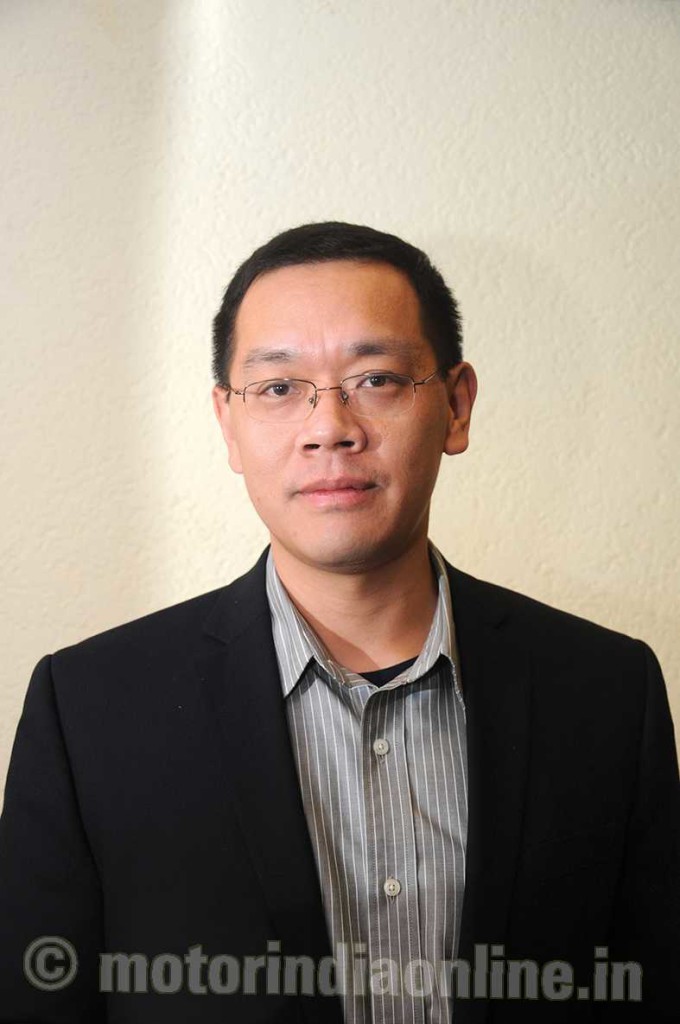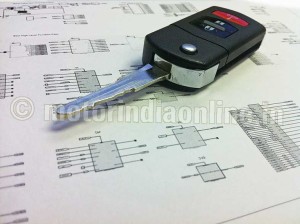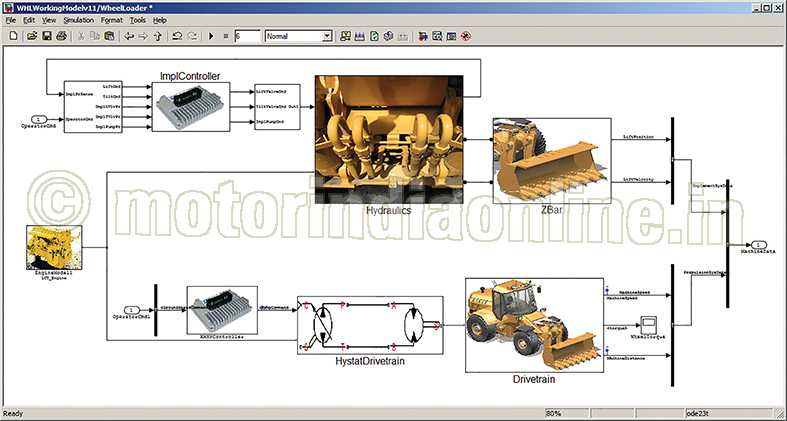Automotive engineering organizations must deliver both conventional vehicles and ‘green’ or alternative-fuel vehicles that meet the current and future environmental requirements of their customers. And they must do this with less time between vehicle programs. To meet the challenge, leading engineering organizations worldwide have moved from a paper-and-prototype design methodology to model-based design. Using MATLAB and Simulink by MathWorks Inc., these organizations speed up embedded controller development and calibration and deliver vehicles that meet market requirements for safety, comfort, functionality, fuel economy, and vehicle performance.
In order to gain a further insight, MOTORINDIA spoke to Mr. Wensi Jin, MathWorks’ Automotive Industry Marketing Manager for North America and Asia Pacific. He is responsible for supporting industry adoption of Model-Based Design and MathWorks tools. Prior to joining MathWorks, he worked on real-time simulation and hardware in-the-loop test systems, first as an applications engineer, then as a business development manager. Holding a degree in Electrical Engineering from the University Texas at Austin, he also worked as a development engineer focusing on automatic transmissions control systems at General Motors Powertrain.
The following are excerpts from the interview:
It’s a known fact that MathWorks is a leading provider of mathematical computing software. Moreover, engineers and scientists worldwide rely on its products to accelerate the pace of discovery, innovation and development. Would you like to elaborate further on this?
I think you covered this very well in the question. The MathWorks, Inc., branded as simply MathWorks, is an American privately held corporation that specializes in mathematical computing software. With an extensive product set based on MATLAB and Simulink, The MathWorks provides software and services to solve challenging problems and accelerate innovation in automotive, aerospace, communications, financial services, biotechnology, electronics, instrumentation, process, and other industries. The MathWorks was founded in 1984 and employs more than 3,000 people worldwide, with headquarters in Natick, Massachusetts. It started its operation in India in 2009 and is now an integral part of our global community.
Please tell us about your company’s presence in the global automotive industry.
MathWorks’ products allow engineers to develop complex systems which exist globally and in India. Complexities may be different depending on the kind of market we are operating in. When you have a complexity, the engineers have to figure out a way to develop some groundbreaking solutions. Complexity doesn’t mean you can add costs but may involve adding more people. Very often, engineers have to work on a complex process with the same number of people and same amount of time. So we help them work faster at lower costs. That’s where engineering tools come for the optimisation of the market.
‘Simulink’, which is essentially a graphical environment for simulation and model-based design of multi-domain dynamic and embedded systems, is catering to various industries. Can you tell us how are these solutions contributing to the automotive industry?

Simulink, developed by MathWorks, is basically a data flow graphical programming language tool for modeling, simulating and analyzing multidomain dynamic systems. Its primary interface is a graphical block diagramming tool and a customizable set of block libraries. It offers tight integration with the rest of the MATLAB environment and can either drive MATLAB or be scripted from it. Simulink is widely used in control theory and digital signal processing for multi-domain simulation and model-based design.
How is your ‘MATLAB’ solution catering to the needs of the Indian automotive industry?
ATLAB (Matrix Laboratory) is a multi-paradigm numerical computing environment and fourth-generation programming language. Developed by MathWorks, MATLAB allows matrix manipulations, plotting of functions and data, implementation of algorithms, creation of user interfaces, and interfaces with programs written in other languages, including C, C++, Java, and Fortran.
Although MATLAB is intended primarily for numerical computing, an optional toolbox, the Symbolic Math Toolbox, uses the MuPAD symbolic engine, allowing access to symbolic computing capabilities. MATLAB is widely used in academic and research institutions as well as industrial enterprises. It is fundamentally a data analysis development tool serving the needs of various industries though automotive happens to one of the biggest ones.
So every industry has a lot of data to be processed. Nowadays, we talk about big engineering data. MATLAB plays a critical role in solving these big data analysis problems. Along with the other toolboxes, it provides a proper mechanism for engineers to analyse the data quickly and also efficiently.
How important is the Indian market for you and how big are you betting on it?
So the Indian market is not an isolated market but part of the global market for us. They are two ways to it. One is that Indian vehicle manufacturers are connected to global markets. Secondly, a lot of multinational companies have set up their operations here. So the Indian market is not a separate one for us. However, it is one of the fastest growing markets for us.
Do you offer any tailor-made solutions for the CV industry? If yes, can you shed some light on that?
The CV industry has a lot of similar characteristics with the PV industry. Often they have the same suppliers. Our solution will cut across the entire spectrum of the segments of the automotive industry. This is because there are a lot of commonalities involved. Data analysis involves very similar problems even though data source or storage could be different. The fundamental solution is almost the same. That pertains to all our solutions whether it is ‘MATLAB’ for data analysis or ‘Simulink’ for system modelling and simulation, as they are almost the same tools for passenger car and commercial vehicle industries. Simscape provides an environment for modeling and simulating physical systems spanning mechanical, electrical, hydraulic, and other physical domains.
Having said all that, the CV industry does have some unique challenges such has a high number of variants which ‘Simulink’ does address. And commercial vehicles have a lot of hydraulics, and we have tools for hydraulic design. Engineers use Model-Based Design to develop commercial vehicles and off-highway machines that deliver increased productivity, uptime and safety while meeting local market and emissions requirements. They do this by using system-level models to validate requirements, then generate embedded code from the models and analytically calibrate the powertrain controllers. So we have tools which cover broad engineering needs in a common way, but also have specific capabilities for different sectors.
So, is the booming auto component industry one of your major focus areas?
Well, it certainly is. We not only look at automotive OEMs, but their Tier-1 and Tier-II suppliers too. For us, it is very important to serve their entire supply chain. Oftentimes, the OEM uses a model to specify a component. The model becomes a specification from an OEM to the supplier. In that case, an OEM and its tier-I supplier gets involved. That can be a similar exercise between a Tier-1 and a Tier-II supplier.

On the other hand, when a Tier-II supplier delivers a component to an OEM, especially when it comes to electronic control modules, the deliverable can be in the form of a model. In such a scenario, the model plays a critical role between the OEM and Tier-1 component player relationship. So it is the entire supply chain that we are working on.
What is your objective in holding MATLAB Expo globally and in India?
MATLAB Expo is an annual, one-day event featuring the latest product capabilities in MATLAB and Simulink, customer presentations, opportunities to network with industry peers, and demo booths hosted by MathWorks and partners. This annual one-day event brings together engineers and scientists from leading organizations to learn about the latest product capabilities in MATLAB and Simulink, exchange ideas, share successful use cases, and network with MathWorks experts, partners, and industry peers.
MathWorks recently-held MATLAB Expo 2014 in Bangalore and Pune. More than 1,000 MATLAB and Simulink users gathered in both cities to discuss innovative technology applications and new product capabilities. The show also featured dedicated exhibition areas that showcased solutions from MathWorks partners such as Altera Corporation, B&R, Cadence, ETAS, Opal-RT Technologies, Vector Informatik and Xilinx.
Finally, are you working on any new solutions for the automotive industry?
We have a series of multiple solutions for this industry. So as the automotive industry looks for new solutions, we keep on updating our existing offerings. Our new capabilities are serving the entire gamut of segments in the automotive industry. For the industry, the important trend that is coming up is the ISO 26262 standards, for which we are offering personalised solutions. The development of high-integrity systems within the automotive industry is characterized by demonstrating compliance with ISO 26262, a standard for road vehicle functional safety. ISO 26262 classifies functions in automotive safety integrity levels (ASIL) from A to D – that is, from the least to the most stringent. OEMs and Tier-1 suppliers are adapting their ECU development processes to the international standard for ISO 26262.
